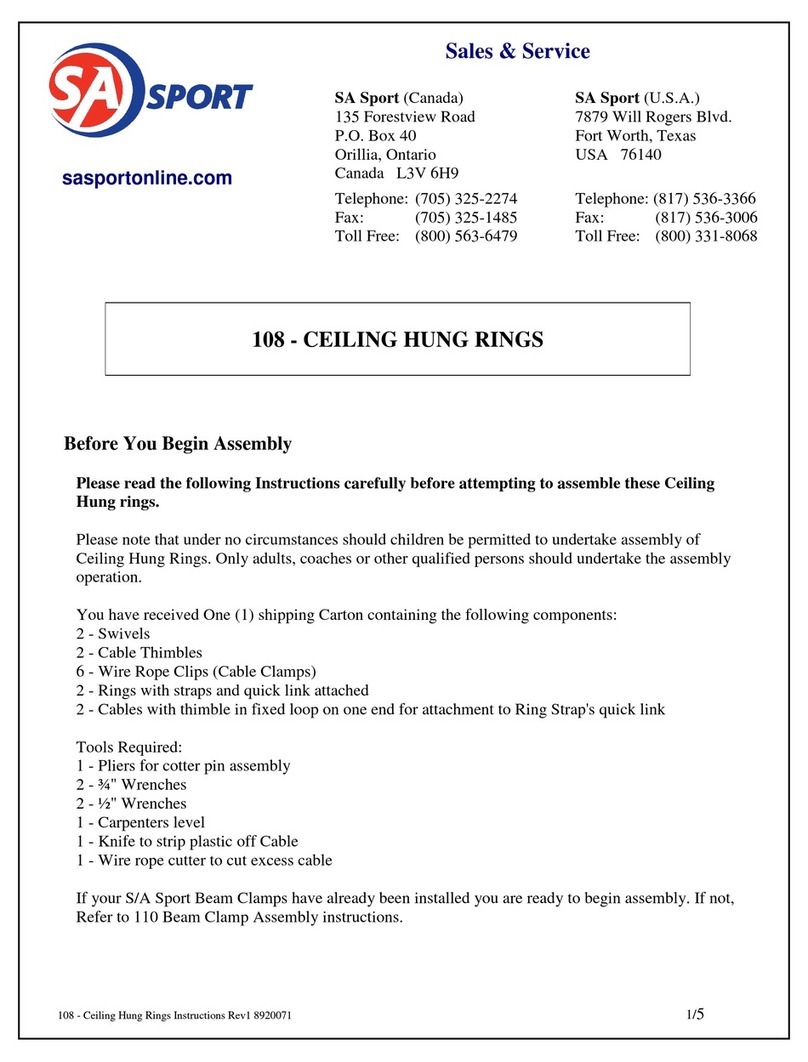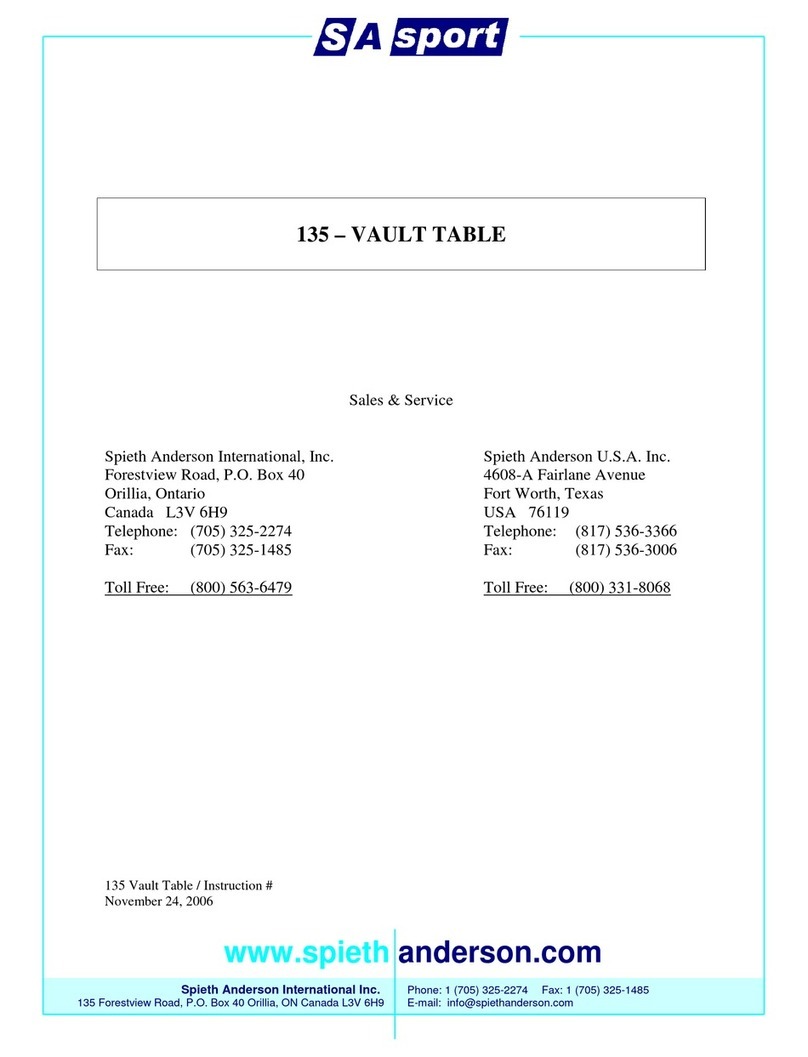
228 PERFORMANCE SERIES SINGLE BAR TRAINER Assembly Instructions
Page 2 of 9
The Performance Series Single Bar Trainer requires 70% less anchor space than a conventional
single bar and has platforms on the inside and outside of the uprights. The inside platform can be
removed quickly and easily when needed.
Our Steel (#P136-10A) and Fiberglass (#P121-99A) rails are completely interchangeable.
•The single bar trainer is designed to save space compared to a conventional cable tie-
down system.
•The Apparatus comes complete with a removable Spotting Platform.
•Height adjusts from 50⅛" (130cm) to 98⅜" (250cm) in 8" (20cm) increments and from 98⅜"
(250cm) to 110¼" (280cm) in 2" (5cm) increments.
•Rails are NOT INCLUDED but are Required for Set Up
Please carefully read the following instructions before assembling and using your new equipment, as
they pertain to the particular equipment you have purchased.
The exclamation mark symbol when seen in this manual is used to indicate warnings or items
that require special attention during the use or assembly of the apparatus.
Assembly, set-up and adjustment of this equipment should only be undertaken by
qualified persons. At no time should children or other unqualified persons undertake
the assembly, set-up, installation or adjustment of this equipment.
For assembly, set-up and adjustment instructions, please read and follow all instructions of this
manual as they apply to your particular piece or pieces of equipment.
Be sure to read and follow all Safety Instructions in the last Section of this manual before attempting
to use the apparatus!
Tools Required:
•Tape measure
•Hammer
•5/8” diameter carbide concrete drill bit
•Anchor setting tool or Drift punch with a 5/16” diameter & at least 1.5” long end
•Hammer drill
•¾” or 19mm Socket and Ratchet
•2 adjustable wrenches
•6ft to 8ft Step Ladder
Single Bar Trainer Packages:
You will have received the following:
•Two Upright bases, including one with a removable Spotting platform
•One box containing the upright adjusting tubes
•One box with the bar carrier assemblies
•One box with cables and tie-downs





























